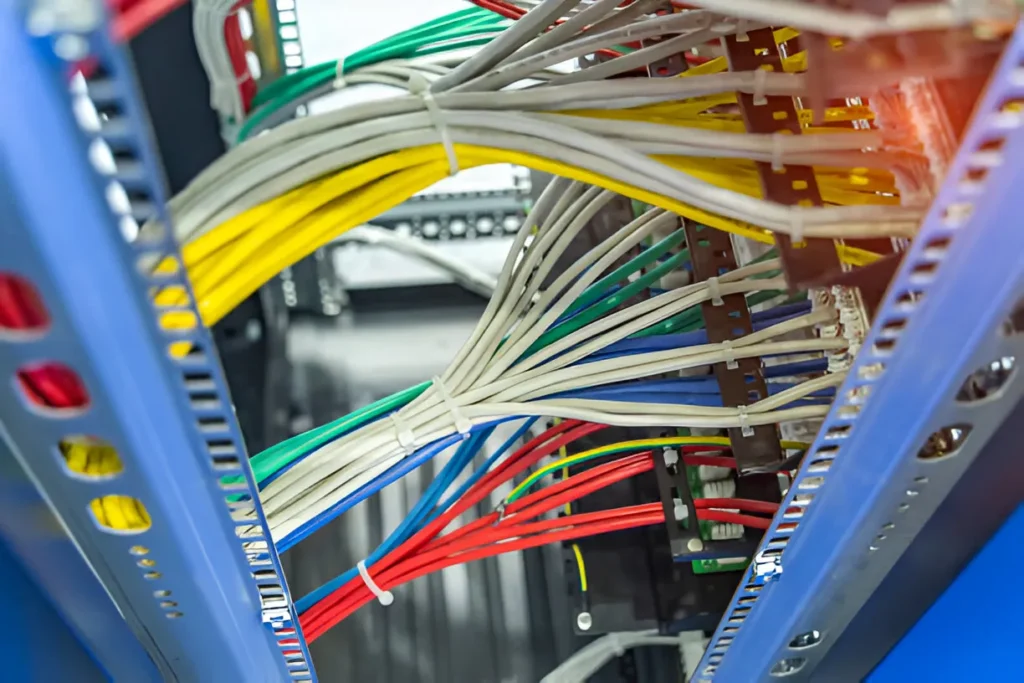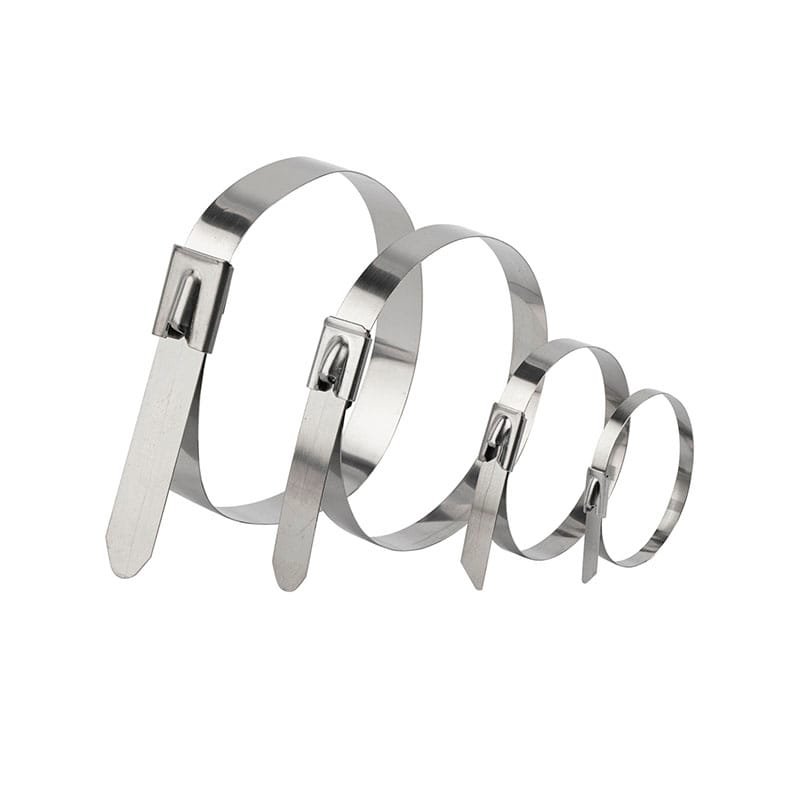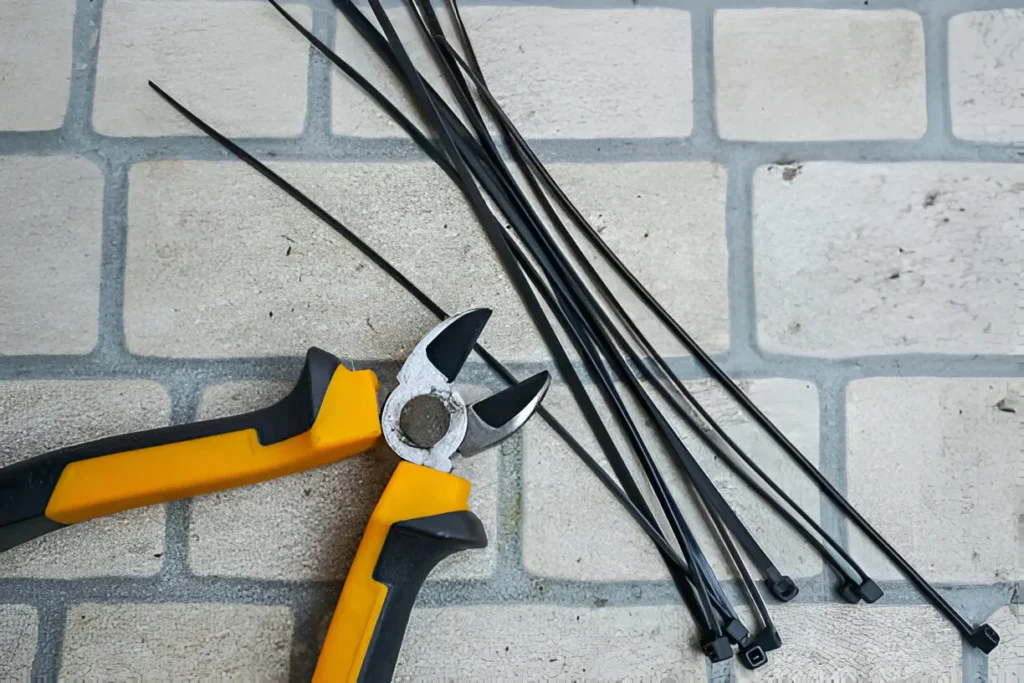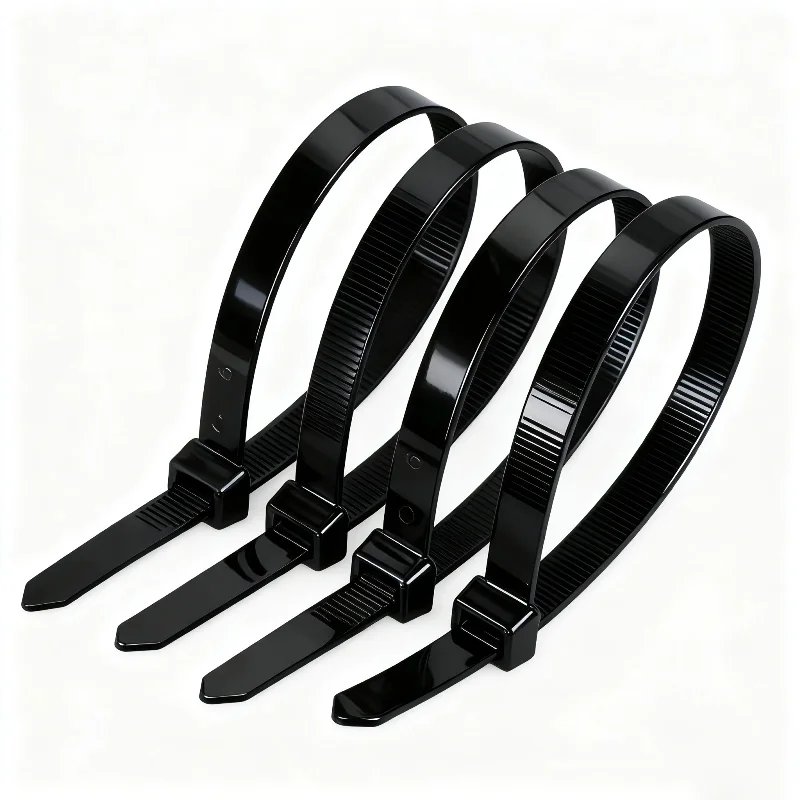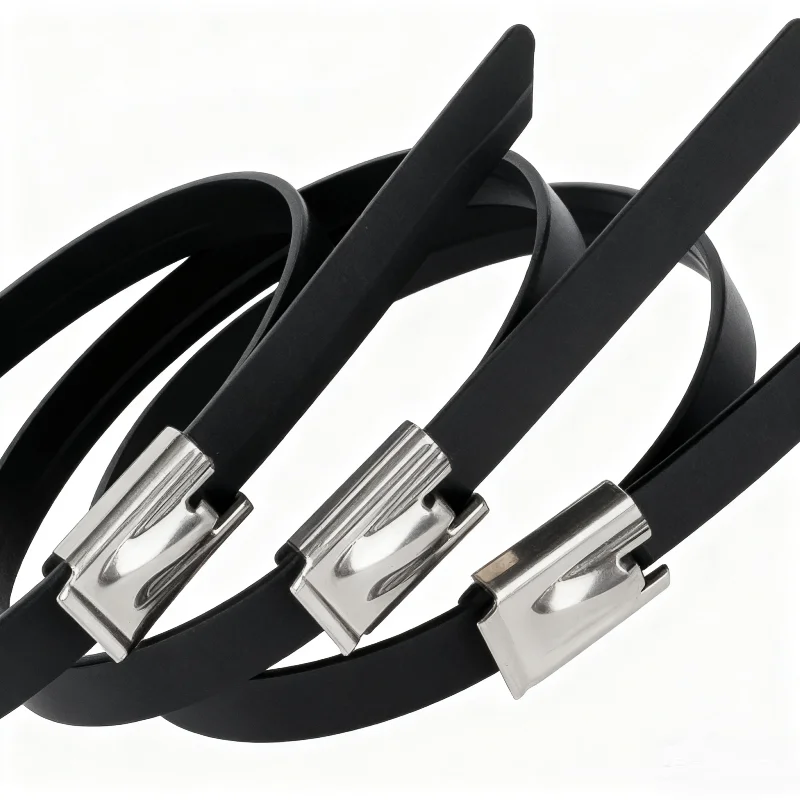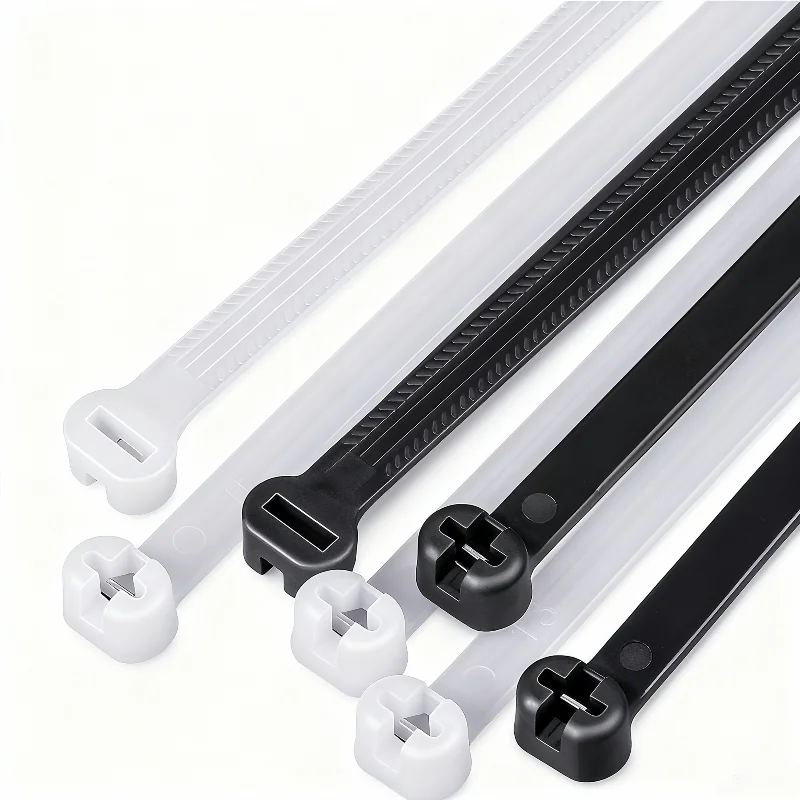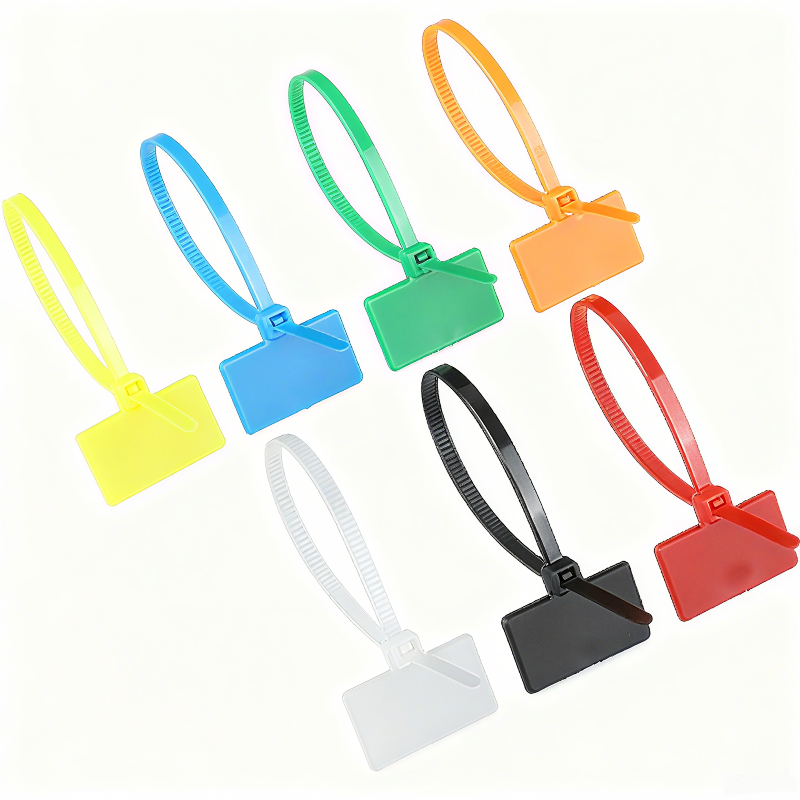Introduction
As a practical fastening tool, cable ties play an important role in households, industries, electronics, and electrical applications. Whether organizing wires, bundling items, or providing secure fastening in complex environments, cable ties demonstrate adaptability and reliability. Depending on the specific use scenarios, cable ties vary in material, design, and function. In this article, we will detail the different types of cable ties to help you choose the most suitable option for your needs.
Types of Cable Ties Materials
Nylon Cable Ties
The most common nylon materials are Nylon 6 and Nylon 66. Nylon 6 is lower in cost, has a higher water absorption rate, and weaker tensile strength and temperature resistance. Nylon 66 is slightly more expensive but offers better overall performance. Nylon cable ties are one of the most commonly used types in daily life, suitable for general environments. They feature good wear resistance and tolerance to high and low temperatures, often used in households, offices, and industrial settings.
Polyethylene material shows excellent resistance to chemical corrosion, making it suitable for environments with acids, alkalis, or other corrosive substances. It has good flexibility, reducing the risk of surface damage during bundling, making it ideal for logistics packaging and daily bundling where strength requirements are lower but convenience is needed.
Polypropylene is known for excellent resistance to chemical corrosion and very low water absorption, maintaining stable performance in humid or chemically exposed environments. This prolongs service life, although toughness is relatively low. It is often used in long-term outdoor or humid conditions.
Common stainless steel grades include 201, 304, and 316, with corrosion and temperature resistance improving with cost. Stainless steel cable ties have high mechanical strength, suitable for harsh environments such as chemical, petroleum, and marine industries, providing long-lasting support under high temperature, heavy load, or corrosive conditions.
Types of Cable Ties Structure
Releasable cable ties feature a reusable locking mechanism. Unlike disposable ties, they have a release structure at the head. By pressing the release button, the locking tongue disengages, allowing easy removal and reuse. Suitable for frequent adjustments, such as cable management and equipment maintenance. The downside is weaker tensile strength, making them best for temporary or short-term fastening.
Self-locking Cable Ties
Self-locking cable ties use a one-time mechanical locking system. Nylon versions have an elastic tongue inside the head that locks into the serrations, preventing backward movement. Stainless steel ball-lock cable ties achieve quick one-way locking via a ball and spring design, especially useful in vibrating environments. These ensure permanent fastening, widely used in industrial, construction, and electrical projects.
Types of Cable Ties Function
The head is rectangular to allow printing, numbering, or handwriting for easy identification of cables and equipment. Widely used in electrical control and network wiring.
Using a dual-loop interlock structure, usually 12mm or 13mm wide, offering high tensile strength and durability. Besides industrial use, they are also applied in security and emergency restraint situations.
Push Mount Cable Ties
These automotive ties have a snap-in mount integrated into the head, allowing quick “one-click” installation into pre-set holes on vehicle panels. They ensure wire harness stability in vibrating environments and are widely used in automotive manufacturing and repair.
Cable Ties with Screw Hole
Designed with a screw hole on the head, they allow direct installation onto walls, racks, or equipment using screws. Ideal for vertical routing in pipeline systems and rack setups.
Made from UV-resistant Nylon 66, with additives determining outdoor lifespan. Black weather-resistant ties are recommended for better UV protection, commonly used in outdoor telecom, landscape lighting, and exposed cable installations.
Made with Nylon 66 containing ≥11% magnetic metal powder evenly distributed. Even small fragments can be detected by metal detectors, essential for industries like food processing and pharmaceuticals where contamination control is critical.
Made from high-temperature Nylon 66 or Teflon, these maintain stability in continuous high-heat environments. Common in engine compartments, kilns, and other heat-intensive applications.
Produced with impact-modified Nylon 66, they retain flexibility at low temperatures, typically rated for -20℃ to -40℃. Widely used in cold chain logistics and refrigeration systems.
Made from polypropylene with very low water absorption and chemical resistance, ideal for aquaculture, chemical plants, and humid outdoor applications.
Beaded Cable Ties
Featuring bead-like bumps, allowing flexible multi-angle locking. Suitable for confined spaces like cabinets and inspection ports, providing secure fastening while enabling position adjustments.
Fish Bone Cable Tie
Designed with rib-like reinforcements, enhancing tensile strength. With wide surface area and flexibility, they protect plant tissues, making them ideal for supporting new saplings and organizing garden plants.
Auto Cable Ties
Developed for automatic bundling machines, enabling continuous bulk fastening. Widely used in automotive manufacturing and appliance assembly, significantly improving efficiency.
How to Choose the Right Cable Tie
When choosing the right cable tie, follow a systematic process: first, evaluate the environment (temperature, UV exposure, chemical risks, humidity) to decide the base material—weather-resistant nylon, corrosion-resistant polypropylene, or high-strength stainless steel. Next, select structure type: self-locking for permanent fastening, releasable for repeated adjustments. Finally, match functional needs: marker ties for identification, screw-hole ties for equipment installation, or metal-detectable ties for food and pharma industries. This ensures both safety and cost efficiency.
FAQ
Q1: How to choose the right tie wire material?
A1: Select the material based on the environment. For low temperatures, choose cold-resistant tie wire; for high temperatures, heat-resistant tie wire; for chemical environments, polypropylene tie wire.
Q2: When should I use self-locking tie wrap vs. releasable tie wrap?
A2: Self-locking is suitable for long-term fastening in industrial and construction settings. Releasable is best for temporary fastening that requires multiple uses.
Q3: How can I find the right zip ties?
A3: Contact WANDU. We will provide the perfect cable tie solution based on your requirements. You can reach us via the email or WhatsApp listed on the right side of our website.


